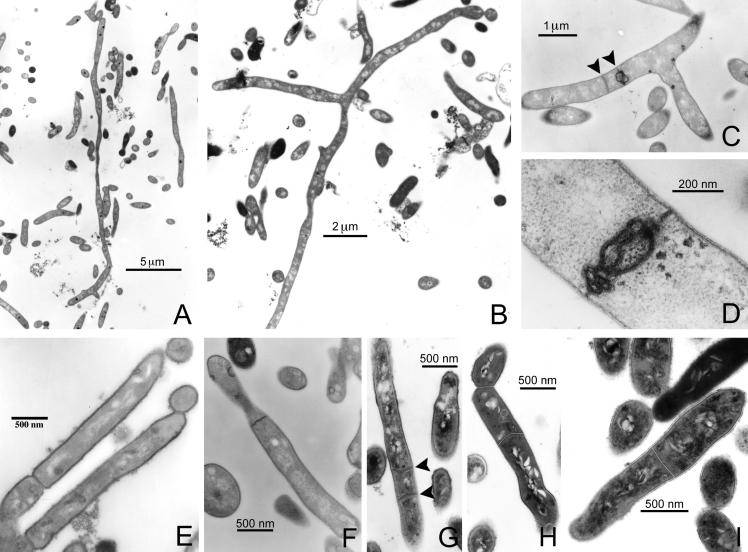Figure 3.
(A–D) Transmission electron micrographs of ultrathin sections of M. smegmatis 628-53, which carries the plasmid pJG1012 (Pace∷whmD), allowing for the acetamide-dependent expression of WhmD. After growth for 13 h in the absence of acetamide, bacteria became filamentous, as can be seen in A and B. The longest bacterium in A is at least 26 μm in length, and no evidence of septa can be detected throughout its length. In B, a branched, aseptate bacterium is shown. The length of this bacterium from the upper right corner to the bottom center of the panel is 16 μm. (C and D) Defective septal structures seen in the WhmD-underexpressing mutant; (C) closely spaced septa (arrows) present in sections of single filaments. (E and F) The complemented mutant strain grown in 0.2% acetamide. Although the morphology of septa appears to be occasionally abnormal, as seen in F, these bacteria are capable of septum maturation and fission. (G–I) M. smegmatis-carrying plasmids pJG1012 (Pace∷whmD; G and H) or PJG1011 (Pace, empty vector; I). Bacteria in G–I were grown 0.2% acetamide and were fixed and stained by using tannic acid. Noteworthy are the multiple septa within a single bacterium (G, arrows) and asymmetric positioning of septa close to previous division sites (H). No unusual septation was seen in bacteria carrying the control plasmid pJG1011 (I).

